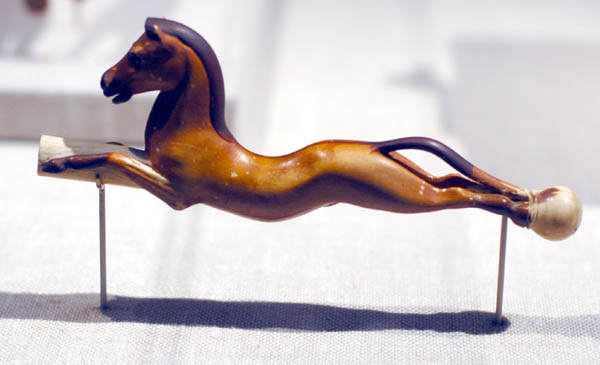Ivory handle in the form of a dog.

c.1391–1353 BC late 18th Dynasty, probably reign of Amenhotep III.
Stained ivory, garnet inlay 15cm long
This small ivory handle of a light whip or fly whisk is carved in the
form of a prancing or running horse stained reddish brown with a black
mane. The eyes, one of which has fallen out, were inlaid with garnet.
The lively carving of this piece, especially the gracefully arched back,
typifies the ability of Egyptian artists to evoke the essential
qualities of animals. It also exemplifies the fine quality attained in
the decorative arts during the reign of Amenhotep III.
